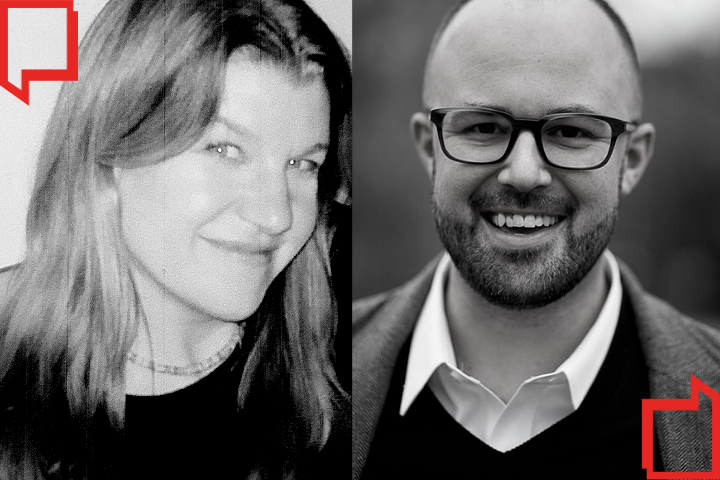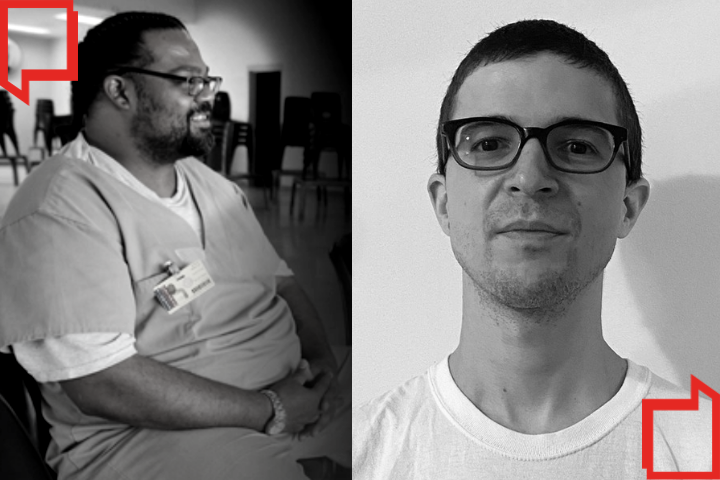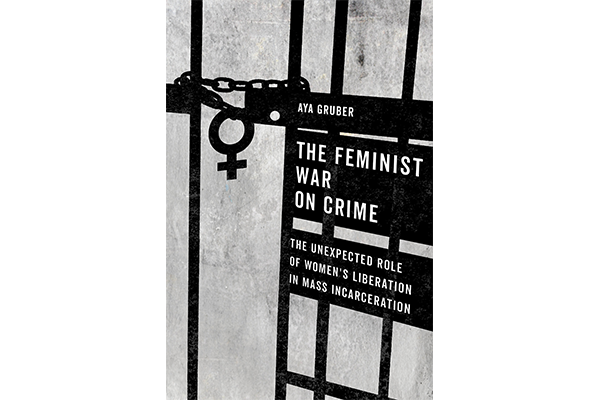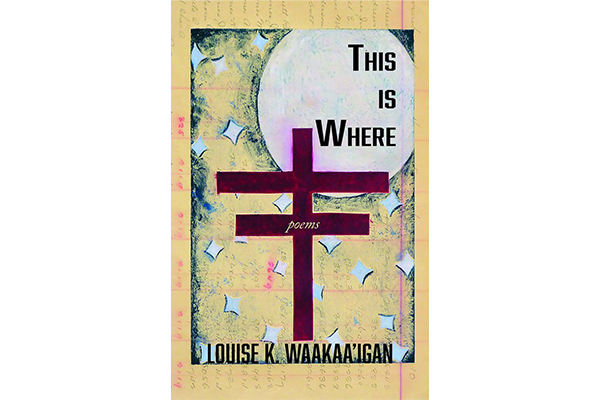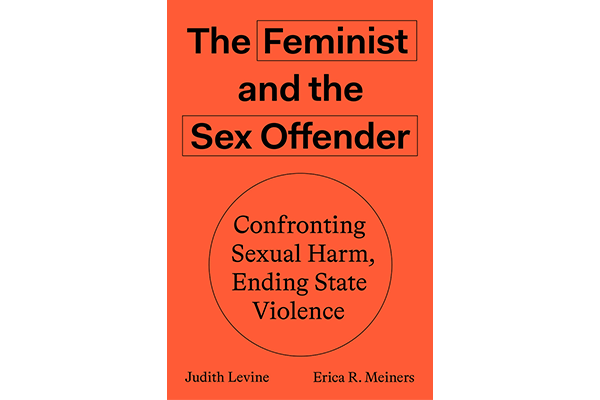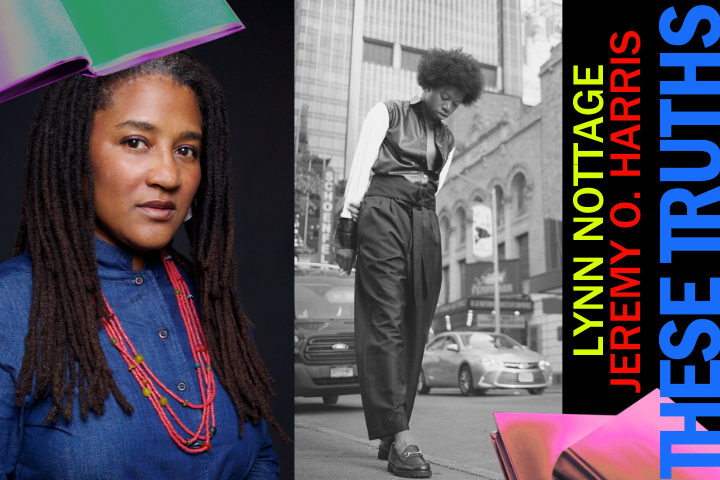As of February 17, 2021, only 12 percent of the U.S. population has been partially vaccinated, as reported by The New York Times. While President Joe Biden hopes for 100 million vaccines distributed by his 100th day, vaccine deliveries are being impacted by severe winter weather, and people may face unexpected appointment cancellations as vaccine supplies dwindle. Furthermore, there has been mass confusion about how to sign up for vaccine appointments, and in New York—where PEN America’s Prison & Justice Writing department is reporting from—Gothamist has reported that “all but four state-run vaccination sites are fully booked through April 16th.”
This scramble for safety has obviously been stressful for us and our loved ones—even more so for people with loved ones inside. According to The Marshall Project, one in five prisoners in the United States has had COVID-19, and people who are incarcerated have tested positive for the coronavirus at a rate that is four to five times higher than the general population.
Several university and medical experts have studied the spread of COVID inside U.S. jails and prisons, concerned about how the spread inside can exercarbate the pandemic. They’ve also examined correctional healthcare systems to ensure that people inside can get the proper care they need, as well as ensure that local hospitals are less overwhelmed, since people who are incarcerated are usually brought to hospitals for emergency services.
In this podcast episode, we spoke to one such university expert, Dr. Bruce Western. A professor of sociology at Columbia University, Dr. Western also co-directs Columbia’s Justice Lab, and has worked alongside other experts in publishing the report, Decarcerating Correctional Facilities during COVID-19 as well as the whitepaper, Recommendations for Prioritization and Distribution of COVID-19 Vaccine in Prisons and Jails. We spoke about decarceration strategies that could improve public health outcomes for all, as well as challenges with the vaccine distribution inside correctional facilities.
We hope Dr. Western’s expansion of the definition of “safety”—one that centers public health—moves you as much as it moved us. I’m Nicolette Natale, producer of PEN America’s Works of Justice Podcast. Without further ado, we welcome you to listen to this week’s “Temperature Check: COVID-19 Behind Bars.”
Transcript
NICOLETTE NATALE: Hi Dr. Western, and thank you so much for joining us today. Before we begin, I was wondering if you could tell us a little bit about yourself and how your initial research on economic inequality led you to study mass incarceration and eventually co-direct Columbia Justice Lab.
BRUCE WESTERN: Thanks a lot for inviting me to talk, Nicolette.
I really started out as a student of poverty and labor markets. I was writing a lot about labor unions, mostly from a comparative perspective, and looking at differences between the United States and Europe. I’m an Australian, and I went to graduate school in the U.S. Over time, as America became my home, I felt increasingly that I should be working on problems of economic inequality in the United States. One of the most striking things for me was the sheer scale of the penal system in America and the level of criminal justice involvement, particularly in low-income communities of color.
I thought if we really want to get a handle on problems of poverty and joblessness—particularly in low-income Black communities—we need to understand what mass incarceration is doing to the economic opportunities in communities of color. And that’s really how I came to do research in this area.
NATALE: Great, thank you so much. In October, you and your colleagues at the National Academies of Sciences, Engineering, and Medicine published Decarcerating Correctional Facilities during COVID-19, a report that’s primarily for policymakers and public health officials, which recommends several strategies for decarceration that also take into account concerns regarding public safety. Could you share some of the most urgent and potentially effective strategies?
WESTERN: As the COVID crisis unfolded in 2020, it became increasingly clear that prisons and jails were some of the most enduring and intractable hotspots and clusters for the pandemic. There have been correctional facilities in the United States where essentially everyone in those prisons and jails acquired the coronavirus infection. And that goes for incarcerated people as well as staff who were working in the prisons. In the National Academies panel, we’re looking at data, and we saw the case rates among incarcerated people were nine times higher than in the general community and among correctional staff—correctional officers who work in prisons—it was about five times higher.
When you look at prisons and jails in America, infectious disease has been a longstanding problem. Tuberculosis. Hepatitis. Influenza outbreaks. These have been longstanding problems in facilities that are often old, poorly ventilated. And correctional healthcare really lies outside of our public health care system.
So when pandemics come along, prisons and jails are not integrated into the process of pandemic preparedness. On top of all of that, because incarceration rates are so historically high in the United States right now, overcrowding is also a key problem and creates a breeding ground for the spread of infectious disease.
So what do you do? A key strategy that we recommend is you have to reduce the population of prisons and jails; de-densify these institutions. Often that means single-celling: one person in one cell for prisons that have that design. Some prisons have dormitory-style housing units—it’s very, very difficult to control infectious disease in those kinds of housing units.
You need very low populations in those sorts of settings. So the key recommendation we made to help control the spread of COVID in prisons and jails is you’ve got to reduce the population, de-densify the institution. How do you do that? At the front end of the system, you have to divert people who would ordinarily be coming in. And there’s so much—I would call it gratuitous incarceration at the front-end of the system. People are held pretrial, pending the payment of bail.
There’s tons of incarceration in jail for people who are facing very low-level charges, and they are only being held because they can’t afford to pay bail. In the context of the pandemic—I mean, that’s problematic for a whole bunch of public policy reasons—but in the context of the pandemic, that’s a huge public health problem. A lot of that incarceration can be eliminated with no real risk to public safety and enormous benefit to public health. That’s at the front-end of the system.
At the back-end of the system, people who are medically vulnerable—it’s a very medically vulnerable population to begin with—people who are medically vulnerable and elderly who are facing very acute risks or being housed in overcrowded facilities need to be moved out of those facilities.
A device to achieve that is compassionate release, and compassionate release should work in a way where medically vulnerable people can be released. This would be people who have acute health vulnerabilities and elderly people. As prisons and jails have grown in America, the population inside has gotten older and older and older because people are serving longer and longer sentences.
The problem with compassionate release in America is that it’s neither compassionate and it doesn’t release anyone. And the way statutes are written at the moment, you have to be within six months of death—so you have to have a terminal disease—and you have to be non-ambulatory. That is far too restrictive in the context of a pandemic to release people who are facing really serious health risks when COVID is raging through a prison system.
There’s a good model for what compassionate release should look like—it’s in the federal system. In the federal system, medical criteria can be a criteria for release. And I think that’s where we need to be. Incredibly, we don’t have that in the stats. If we’re going to release people at scale in response to the pandemic, as part of the public health strategy, we need to have social support on the outside, waiting for people when they come out. That means healthcare, income support, and stable housing, particularly if people need to quarantine. So in a nutshell, that’s what we need to do.
NATALE: Great, thank you so much. I wanted to touch on something that you were talking about in regards to compassionate release. I know that in New York, 1,049 people have applied for medical parole, and only nine applications have been granted. This has been documented in Gothamist. So I was wondering if you could talk about options for advocacy both for supporters outside and at the bureaucratic level to push this agenda.
WESTERN: There are two contending logics in conflict here. There’s the custodial logic of incarceration, which is extraordinarily risk-averse, and the stated concern for safety overrules any other consideration. If there is the minutist possibility of risk that someone could be released and commit a serious crime, then whatever countervailing arguments for release—someone could get very sick, someone is at risk of death because of their vulnerability to coronavirus—those sorts of considerations are not given serious weight because the incarceration logic is so overwhelming and the risk aversion is so intense.
The alternative logic is a public health logic. It’s a non-blaming logic at its core. People are at risk of getting sick; it’s an infectious disease; if people get sick, that could make other people sick, and the harms from uncontrolled infection are substantial. So what does this mean for the advocacy community? I think we need to talk about safety in a different way, and the advocates are not at odds with the correctional decision-makers. The advocates want safety too. But they’re defining safety, I would argue, in a broader way. They’re not only concerned with the risks of serious crime among people who would be released early—many of whom, incidentally, pose very, very little risk of that serious crime, particularly if old age is a release criteria, as it should be.
So I think that’s the ground on which the advocates should be working. The disease does not distinguish between incarcerated people and correctional staff. And the strategy of keeping people locked up also poses a threat to correctional stuff. Advocates should enter into that argument as well.
I think the third part is that if people are properly supported after release, if we’re attending to income continuity and healthcare and housing and doing that in a serious way, those risks that the correctional decision-makers are worried about get reduced even further.
So I think there’s a multipronged argument that needs to be made. The big one is we got to expand the way we think about safety. Safety is not only safety from the very small risk of serious victimization for people who are released from prison early. Safety is having security and order and predictability in daily life, and public health is as fundamental to that idea of safety as is protection from crime.
NATALE: I completely agree with you on that, so thank you for saying that. I also just wanted to ask you a question, because something that you talked about in the report is that more people have been released from jails than from prisons, and that “prisons face the strongest legal and political pressures to retain people in custody, and as a result, obstacles to meaningful decarceration for prisons are greatest.”
Could you talk about the difference between the scenario in jails and prisons, as well as some of the obstacles for meaningful decarceration?
WESTERN: It’s a really interesting question, the difference between prisons and jails at this moment. Jails have massive turnover: About 10 million people pass through America’s jails every year, but only about 600,000 people are admitted to prison.
Prisons are much bigger institutions. Overall, there’s about 1.4 million people in prison but only about 700,000 in jails. Prisons are twice as big as jails, but the footprint of the jail is massive because people are just flooding through that institution.
How have jails reduced their population in the COVID period? It’s all diversion at the front end. And I got to say, a lot of it was not deliberate strategies of population reduction motivated by the public health crisis. A lot of it was due to the shutdown, and COVID restrictions were associated with a big drop in arrests.
People were locked in at home. They weren’t out in the street, vulnerable to arrest. And the courts: Court traffic significantly shut down in the COVID period. So fewer people were coming into jail, and the jail population reduced. And that made them safer from a COVID point of view, but it wasn’t mostly the result of deliberate efforts to reduce incarceration. It was a byproduct of the COVID lockdown.
Prison’s much tougher. So jail populations decreased by 20 percent; prison populations decreased by about 5 percent in the COVID period. Most of the population reduction that happened in prisons were also happening from diversion at the front end. Because fewer people were going to jail, fewer people were coming into prison from jail once they were sentenced.
It is very, very difficult as a political matter in this country to release people early who have been convicted of felony offenses and sentenced to prison, even though the public health argument for doing that is overwhelming. And so far, the public health argument has not won the day over the punitive criminal justice policy argument.
So far, punishment has dominated public health, and the incarceration logic has dominated the public health logic. We want to be blaming—we view people who are incarcerated in prison as undeserving of any relief of punishment in deference to public health that the entire community would enjoy.
NATALE: That makes me think of something that you were talking about earlier with the correctional healthcare facilities being largely outside of the mainstream public health. I was wondering if you could talk about some of the ramifications of that, and also what changes to the current correctional healthcare model would support a better management of this pandemic, as well as future health crises?
WESTERN: It’s a problem with big implications. So, you know, there’s this whole healthcare system in the United States. And there are hospitals and doctors and nurses who are connected to Medicare and Medicaid and private insurance, and because of the way our healthcare system is designed, the enforcement of medical standards and oversight is intimately connected to medical billing and insurance and Medicare and Medicaid.
The way healthcare standards are enforced is part of a whole national system of the administration provision of healthcare. Healthcare in prisons and jails is not a part of that system. They’re not subject to the same oversight and enforcement of standards that the rest of the healthcare system is subject to.
Healthcare inspectors in the United States could close down a hospital immediately if the inspection found the service was substandard. It’s nothing like that in prisons and jails: There’s some accreditation. It’s partial—a lot of systems are not accredited but are removed from the rest of the U S healthcare system.
In the context of the pandemic, a whole bunch of planning goes on as providers prepare for how to respond to a significant increase in caseload when people start getting sick, showing up at their doctor’s offices, showing up in hospitals. A whole variety of protocols are adopted, often with guidance from the CDC.
It’s a big, organized, coordinated process. Although I have to say, in the context of this pandemic—and a lot of people have observed this—it was really a vacuum, the federal leadership in response to the pandemic; there wasn’t a lot of pandemic preparedness planning.
And it didn’t happen in prisons and jails. Correctional health wasn’t integrated into that pandemic preparedness planning, even though it was known that prisons and jails are hotspots for infectious disease, because we’ve seen this with a whole bunch of other infectious disease outbreaks.
So things like testing, personal protective equipment, protocols for quarantining and cohorting—there was no central guidance on that. The states and counties were on their own. There was a lot of improvisation—the CDC didn’t introduce guidance until July. And the pandemic was exploding in March.
So what should we do? We need Medicaid. We need Medicaid in prisons. And that really has two effects. It would raise the standard of care because there would be federal billing—the real costs of healthcare would be much more proportionate to need.
Once the federal health care system is patterned for medical services inside prisons, healthcare services inside prisons become subject to the same oversight that prevails out in the community. And it would open up the system.
A problem with prisons in America is they’re black boxes; they’re institutions that have been very difficult to penetrate, and it’s very difficult to find accountability for what goes on inside them. This would also have the benefit of beginning to provide some accountability for the health of people who are incarcerated.
NATALE: Great, thank you. I also wanted to pivot a little bit to talk about the vaccine distribution inside since you and other university experts wrote recommendations for prioritization and distribution for COVID-19 vaccine in prisons and jails.
I wanted to talk about how, also in the decarceration report, you’ve talked about how there was little demographic data as it pertains to releases, but the data that we currently have available indicate that white people have been released more from prisons and jails than Black people.
This is highlighting a trend that we’re currently seeing with the vaccine rollout in New York city where Gothamist has reported that in the first few weeks of vaccine distribution, “white people have received about five times as much as the vaccine.” So I’d love to hear some of your thoughts on how we’re seeing the lack of racial equity play out in efforts toward decarceration and the vaccine rollout for people inside.
WESTERN: It’s a huge question. We were thinking a lot about this in the context of decarceration. I think often, what happens, right? Unless you take a very intentional approach to racial equity and are very self conscious about it in reentry planning and population reductions, what you’ll do is you’ll be screening people, you’ll be trying to find good candidates for release, where that’s happening (didn’t happen a lot). But those screens are looking at things like: Does someone have a stable housing to return to? Is there a network of family support? Will there be the economic resources to support successful reentry?
Those criteria will work in favor of more advantaged incarcerated people. They tend to work in favor of whites more than Blacks. And if you don’t take a very intentional approach to racial equity, all sorts of inequalities are going to be introduced through that. Similar with vaccine distribution, as you said already.
I think we’re seeing this in other localities besides New York. I’m seeing reports from California—the Times has been reporting on this in a number of cities, actually. Because the health infrastructure, the health delivery infrastructure is better in white affluent communities, communities of color are paying for the disinvestment that they’ve suffered from the public health system, and the vaccine is not being delivered as effectively.
I think the key thing here in the correctional context is you’ve got a system with massive racial disparities, where African Americans are about six times more likely to go to prison than whites. For anyone who’s visited prisons, there’s such a striking reality inside prisons. And I think there’s been a lot of reluctance in a lot of states—but not all states—to roll out the vaccines inside prisons, even though the public health effect would be really substantial. It would really help to control the spread.
Another piece of this too—and it’s a hard question—is vaccine hesitancy. Incarcerated people have been the subjects of medical experiments, and there’s a long history there and a lot of distrust of healthcare systems inside. And there’s an understandable reluctance to take up vaccines when they’re available. There are strategies you can adopt to meet the challenge of that vaccine reluctance. But you have to take that on if you’re serious about meeting the public health challenge of the pandemic.
NATALE: Just before we wrap up, is there anything else that you would like to add?
WESTERN: We covered a lot. I think, sort of at a larger level, if we zoom out from what’s happening: Mass incarceration is just so, so profoundly dehumanizing—to punish at the scale that we do with the severity that we do. We have to radically suspend our capacity for compassion and empathy to punish in that way.
I think the way we’re handling the pandemic inside prisons and jails is really a byproduct of the way in which people get dehumanized, the way we cut off our sense of compassion and empathy. And I think at the most abstract level, that’s what we have to rebuild, and the entire community in a pandemic—with a very infectious disease—is paying the price for treating some of the most marginalized segments of our population with such cruelty and disregard. We’re all paying a price for that.
NATALE: Yeah, I agree. And I hope that there’s more compassionate and empathy to come.
WESTERN: I hope so too.
NATALE: I appreciate you taking the time to talk to me today a lot. Thank you so much for everything.
WESTERN: Thanks a lot, Nicolette. I enjoyed the conversation.


